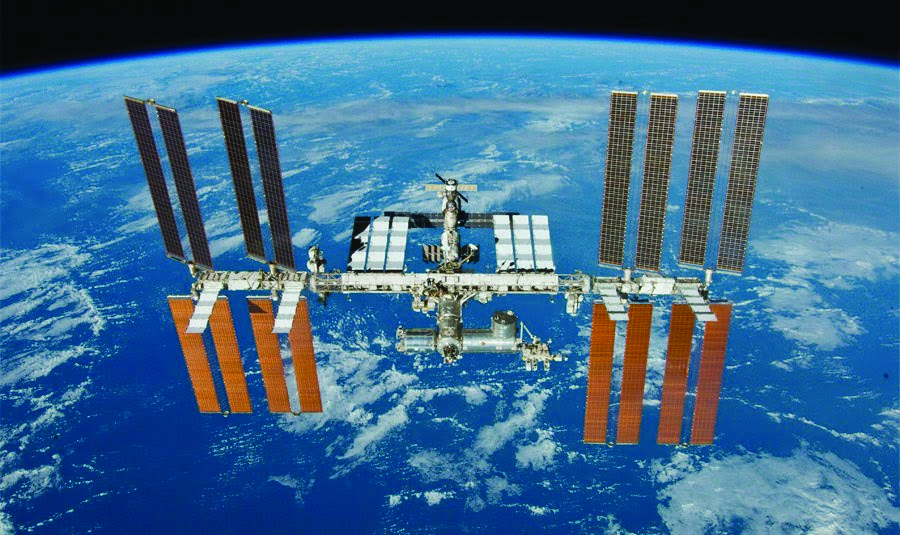by Patricia Jeffery, Calgary Centre of the Royal Astronomical Society of Canada
International Space Station
When observing the night sky, you just might catch a glimpse of the ISS passing overhead. In operation since 1998, the ISS is a joint venture involving the USA, Russia, Japan, Europe, and Canada. It operates not only as a scientific research laboratory, but also as a vehicle to test equipment required for future long duration missions to the Moon and Mars.
Quick Facts
- 73 meters wide and 109 meters long; larger than a CFL football field
- Orbits 400 kms above Earth with a crew of 7
- Circles Earth every 90 minutes at 28,000 km per hour
Want to know when the ISS is passing over Calgary?
Go to https://spotthestation.nasa.gov.
Enter Calgary as your location and receive emails or texts to alert you when the ISS will be passing overhead.
Example of an ISS alert:
Time: Fri Feb 2 6:50 PM, Visible: 6 min, Max Height: 34°, Appears: 10° above W, Disappears: 10° above SE
Holding your fist at arm’s length to the horizon, the top of your fist will be at about 10 degrees. So, in the example above, the ISS will first appear one fist above the western horizon, cross the sky at a height of 3½ fists above the southern horizon, then disappear one fist above the southeastern horizon.
A farm girl from Iowa, Peggy Whitson, has spent more time in space than any American astronaut: 665 days, all of it on the ISS, including twice as commander.
With no plans to retire just yet, she is scheduled to command a SpaceX Crew Dragon mission to the ISS either this fall or the spring of 2023; at the age of 63.










